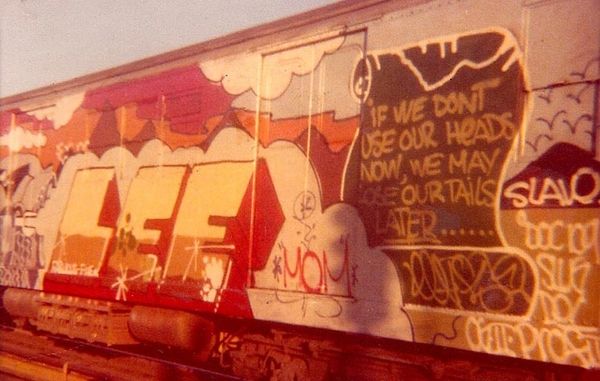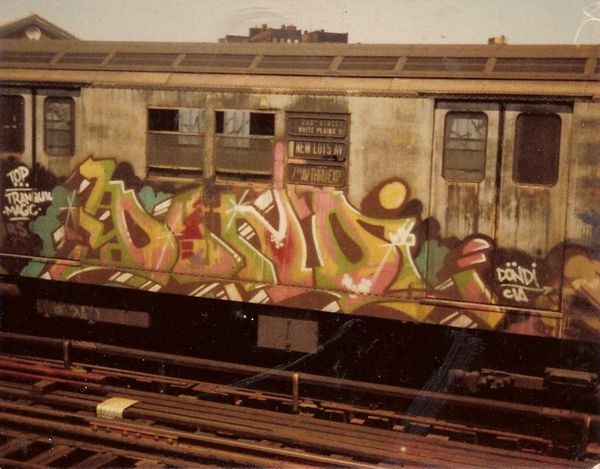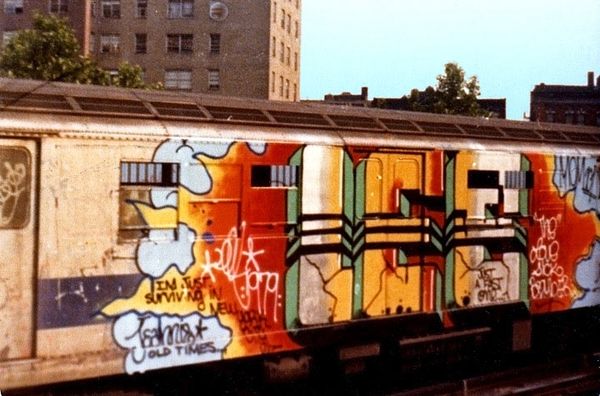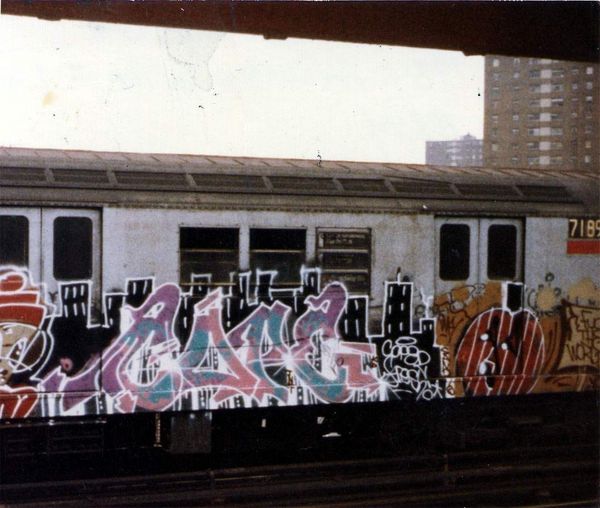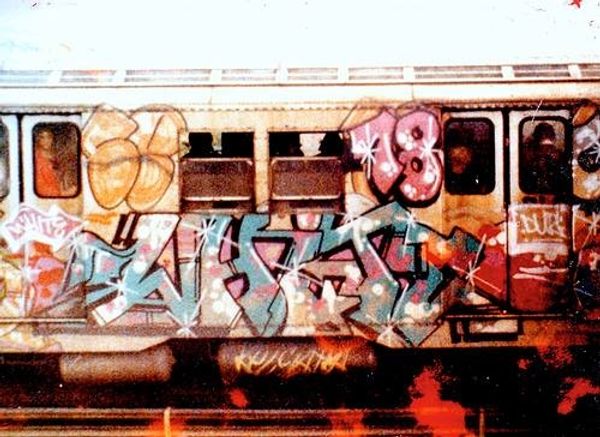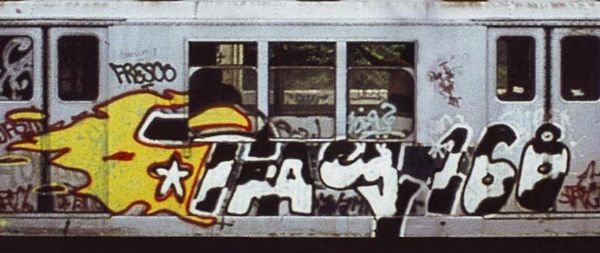
Copyright: Lee Quinones,Fair Use
Curator: Lee Quinones, a significant figure in the New York City graffiti movement, created this work, entitled “Year of the Dragon” in 1979. It’s executed in acrylic paint and ink, typical for the era, on, shall we say, a rather unconventional canvas. Editor: Unconventional is putting it mildly! My first thought? It's a raw, visceral burst of rebellion on wheels. The colors smack you in the face and the dragon looks ready to breathe fire at… well, everything. Curator: Exactly. Context is crucial here. Consider the late 70s in New York. Social unrest, economic hardship, and marginalized communities finding their voice. The subway cars became moving canvases of protest and self-expression. Quinones, and others, were not just tagging; they were reclaiming public space, challenging established power structures. It's fascinating to see the intersection of visual art and social activism. Editor: Reclaiming space with a fire-breathing reptile, no less! Seriously, though, there’s something both aggressive and playful about it. The crude, almost cartoonish dragon juxtaposed with the stylized lettering speaks to a complex mix of emotions. I see defiance, sure, but also a strange sort of joy. Curator: The lettering, rendered in a bold, almost blocky style, emphasizes this act of claiming—tagging is itself an act of spatial contestation. I see connections to broader social theories, how marginalized identities negotiate urban landscapes. Quinones wasn’t just painting a dragon; he was asserting a presence. He was making visible the invisible. Editor: Making it very visible! I love that this wasn’t meant for a gallery wall. This dragon lived and breathed on the move, disrupting the daily grind, provoking reactions. Can you imagine catching a glimpse of this thing barreling through a station? Instant shot of adrenaline! The fleeting nature of street art adds to its impact, almost a dare to the establishment. It’s as if to say, “Here I am. Try to erase me.” Curator: And of course, it's been meticulously documented; that is how we come to discuss this print. Reflecting on Quinones’ bold intervention decades later prompts contemplation on how we define art, whose voices get amplified, and how ephemeral forms of expression can leave lasting marks. Editor: It’s a powerful reminder that art isn’t confined to gilded frames. It can roar from the side of a subway car and make you feel something raw and real, if only for a fleeting moment. It makes me feel nostalgic for a time that was chaotic and free.
Comments
No comments
Be the first to comment and join the conversation on the ultimate creative platform.
